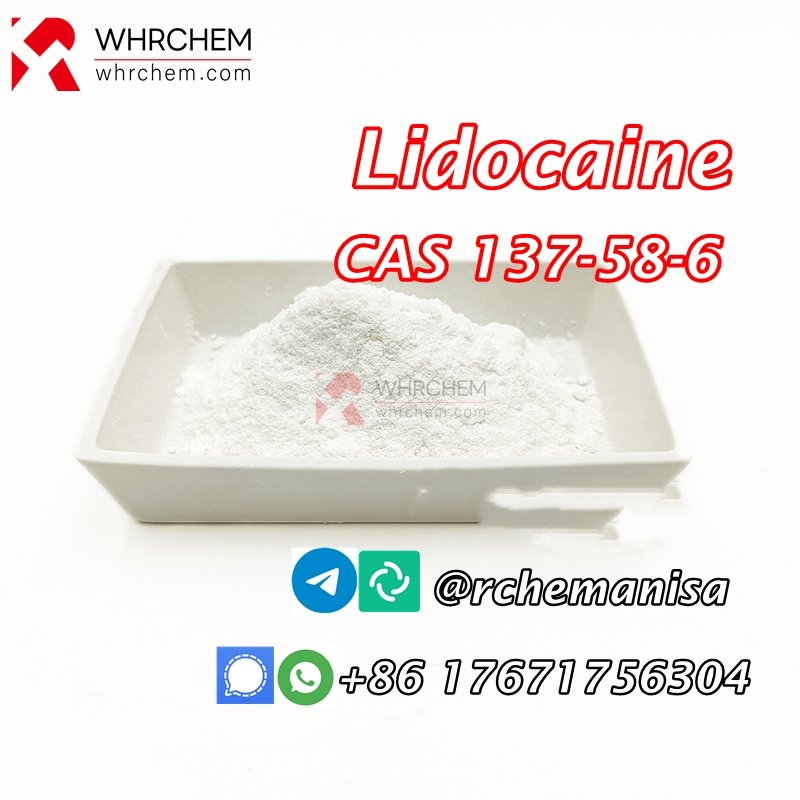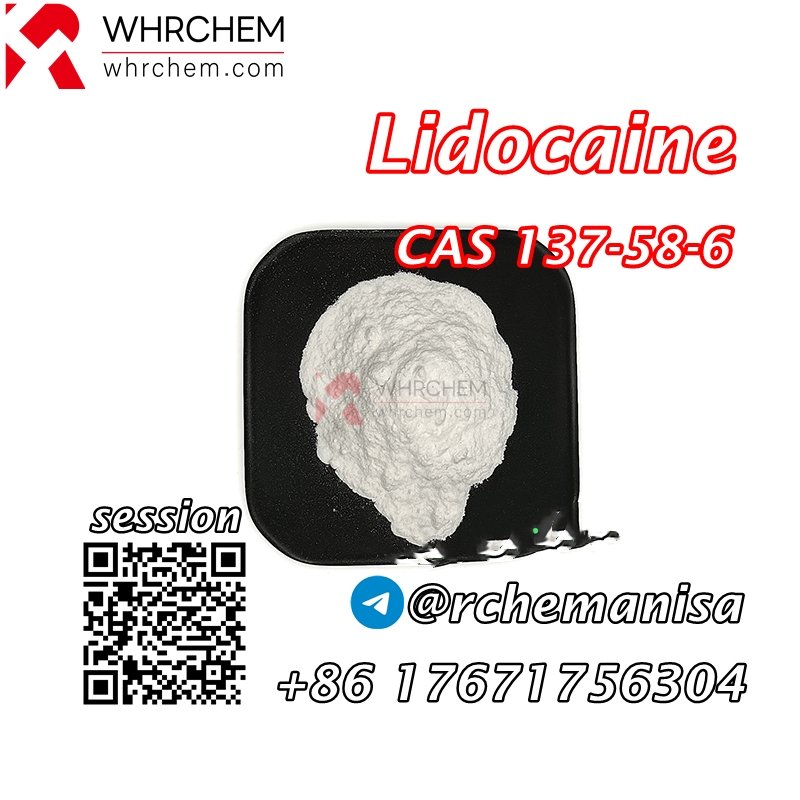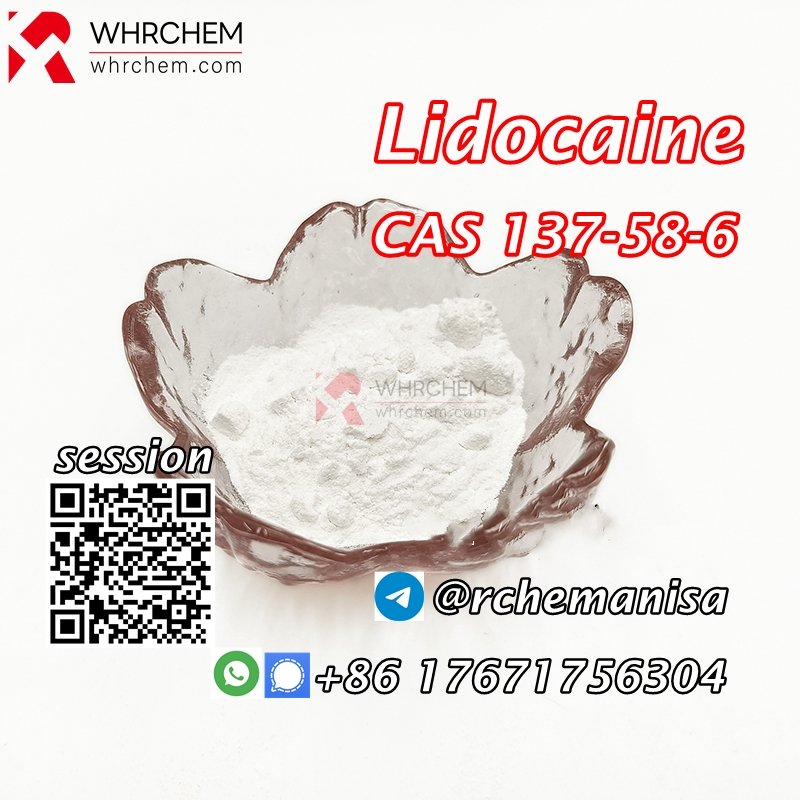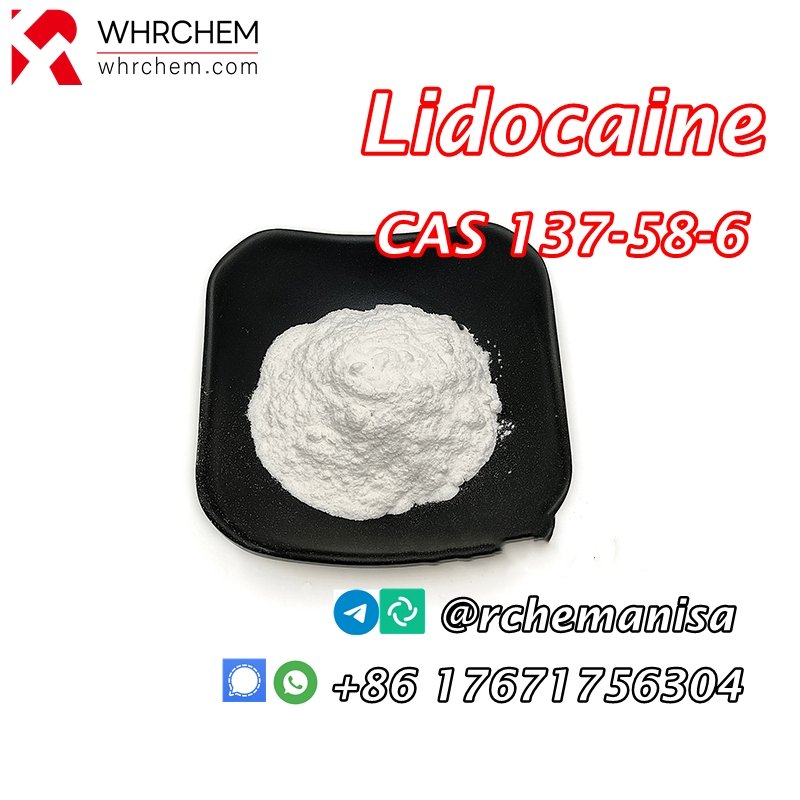Lidocaine CAS 137-58-6 Vendor
Lidocaine CAS 137-58-6 Ligoncaine, high purity with 100% safe delivery.
Lidocaine Basic Parameter
| Product Name | Lidocaine |
| Synonyms | 2-(Diethylamino)-2′,6′-acetoxylidide;2-(diethylamino)-2’,6’-acetoxylidide;2-(diethylamino)-n-(2,6-dimethylphenyl)-acetamid;6’-acetoxylidide,2-(diethylamino)-2;Acetamide,2-(diethylamino)-N-(2,6-dimethylphenyl)-;Ligoncaine;Maricaine |
| CAS NO | 137-58-6 |
| Molecular Formula | C14H22N2O |
| Molecular Weight | 234.34 |
| EINECS | 205-302-8 |
| Melting Point | 66-69°C |
| Boiling Point | bp4 180-182°; bp2 159-160° |
| Flash Point | 9℃ |
| Density | 0.9944 (rough estimate) |
| Assay | ≥99% |
| Grade | Pharmaceutical Grade |
| Solubility | Practically insoluble in water |
| Appearance | White to slightly yellow powder |
CAS 137-58-6 Picture

What is Lidocaine?
Lidocaine, also known as lignocaine and sold under the brand name Xylocaine among others, is a local anesthetic of the amino amide type. It is also used to treat ventricular tachycardia. When used for local anaesthesia or in nerve blocks, lidocaine typically begins working within several minutes and lasts for half an hour to three hours. Lidocaine mixtures may also be applied directly to the skin or mucous membranes to numb the area. It is often used mixed with a small amount of adrenaline (epinephrine) to prolong its local effects and to decrease bleeding.
Maricaine Usage:
Medical uses
Local numbing agent
The efficacy profile of Ligoncaine as a local anaesthetic is characterized by a rapid onset of action and intermediate duration of efficacy. Therefore, Maricaine is suitable for infiltration, block, and surface anaesthesia. Longer-acting substances such as bupivacaine are sometimes given preference for spinal and epidural anaesthesias; lidocaine, though, has the advantage of a rapid onset of action. Adrenaline vasoconstricts arteries, reducing bleeding and also delaying the resorption of Maricaine, almost doubling the duration of anaesthesia.
Maricaine is one of the most commonly used local anaesthetics in dentistry. It can be administered in multiple ways, most often as a nerve block or infiltration, depending on the type of treatment carried out and the area of the mouth worked on.
For surface anaesthesia, several formulations can be used for endoscopies, before intubations, etc. Maricainedrops can be used on the eyes for short ophthalmic procedures. There is tentative evidence for topical lidocaine for neuropathic pain and skin graft donor site pain. As a local numbing agent, it is used for the treatment of premature ejaculation.
An adhesive transdermal patch containing a 5% concentration of lidocaine in a hydrogel bandage, is approved by the US FDA for reducing nerve pain caused by shingles. The transdermal patch is also used for pain from other causes, such as compressed nerves and persistent nerve pain after some surgeries.
Heart arrhythmia
Ligoncaine is also the most important class-1b antiarrhythmic drug; it is used intravenously for the treatment of ventricular arrhythmias (for acute myocardial infarction, digoxin poisoning, cardioversion, or cardiac catheterization) if amiodarone is not available or contraindicated. Maricaine should be given for this indication after defibrillation, CPR, and vasopressors have been initiated. A routine preventive dose is no longer recommended after a myocardial infarction as the overall benefit is not convincing.
Epilepsy
A 2013 review on treatment for neonatal seizures recommended intravenous lidocaine as a second-line treatment, if phenobarbital fails to stop seizures.
Other
Intravenous Maricaine infusions are also used to treat chronic pain and acute surgical pain as an opiate sparing technique. The quality of evidence for this use is poor so it is difficult to compare it to placebo or an epidural.
Inhaled lidocaine can be used as a cough suppressor acting peripherally to reduce the cough reflex. This application can be implemented as a safety and comfort measure for patients who have to be intubated, as it reduces the incidence of coughing and any tracheal damage it might cause when emerging from anaesthesia.
A 2019 systematic review of the literature found that intraurethral lidocaine reduces pain in men who undergo cystoscopic procedures.
Maricaine, along with ethanol, ammonia, and acetic acid, may also help in treating jellyfish stings, both numbing the affected area and preventing further nematocyst discharge.
For gastritis, drinking a viscous lidocaine formulation may help with the pain.
Contact Anisa:
WhatsApp/Signal: +86 17671756304
Telegram: @rchemanisa
Element: @rchemanisa:matrix.org
Website:https://bmf-49851-31-2.com
Session: 05468ee84b6ca5c619560e29a92e664c358c08b4ea5c6c2d5d88f39e8c87dcb407







Reviews
There are no reviews yet.